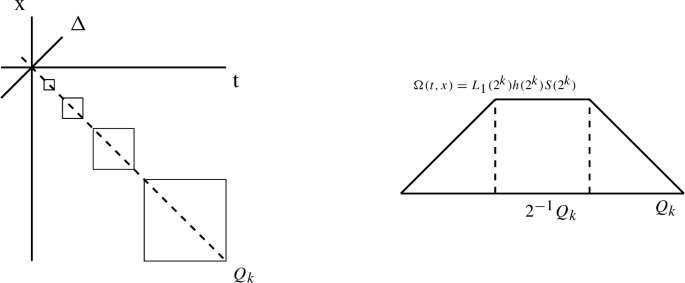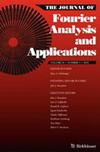卡尔德龙-齐格蒙德算子的沙腾类
IF 1.2
3区 数学
Q2 MATHEMATICS, APPLIED
引用次数: 0
摘要
我们证明了卡尔德龙-齐格蒙算子属于沙腾类的充分条件。与经典的 T1 理论一样,这些条件是根据算子核的平滑性以及算子及其对函数 1 的作用给出的。为了证明当 \(p>2\)时属于沙腾类,我们为组成的卡尔德龙-齐格蒙德算子开发了新的碰撞估计,并对卡列森嵌入定理进行了新的扩展。本文章由计算机程序翻译,如有差异,请以英文原文为准。

The Schatten Classes of Calderón–Zygmund Operators
We prove sufficient conditions for a Calderón–Zygmund operator to belong to the Schatten classes. As in the classical T1 theory, the conditions are given in terms of the smoothness of the operator kernel, and the action of both the operator and its adjoint on the function 1. To show membership to the Schatten class when \(p>2\) we develop new bump estimates for composed Calderón–Zygmund operators, and a new extension of Carleson’s Embedding Theorem.
求助全文
通过发布文献求助,成功后即可免费获取论文全文。
去求助
来源期刊
CiteScore
2.10
自引率
16.70%
发文量
72
审稿时长
6-12 weeks
期刊介绍:
The Journal of Fourier Analysis and Applications will publish results in Fourier analysis, as well as applicable mathematics having a significant Fourier analytic component. Appropriate manuscripts at the highest research level will be accepted for publication. Because of the extensive, intricate, and fundamental relationship between Fourier analysis and so many other subjects, selected and readable surveys will also be published. These surveys will include historical articles, research tutorials, and expositions of specific topics.
TheJournal of Fourier Analysis and Applications will provide a perspective and means for centralizing and disseminating new information from the vantage point of Fourier analysis. The breadth of Fourier analysis and diversity of its applicability require that each paper should contain a clear and motivated introduction, which is accessible to all of our readers.
Areas of applications include the following:
antenna theory * crystallography * fast algorithms * Gabor theory and applications * image processing * number theory * optics * partial differential equations * prediction theory * radar applications * sampling theory * spectral estimation * speech processing * stochastic processes * time-frequency analysis * time series * tomography * turbulence * uncertainty principles * wavelet theory and applications

 求助内容:
求助内容: 应助结果提醒方式:
应助结果提醒方式:


